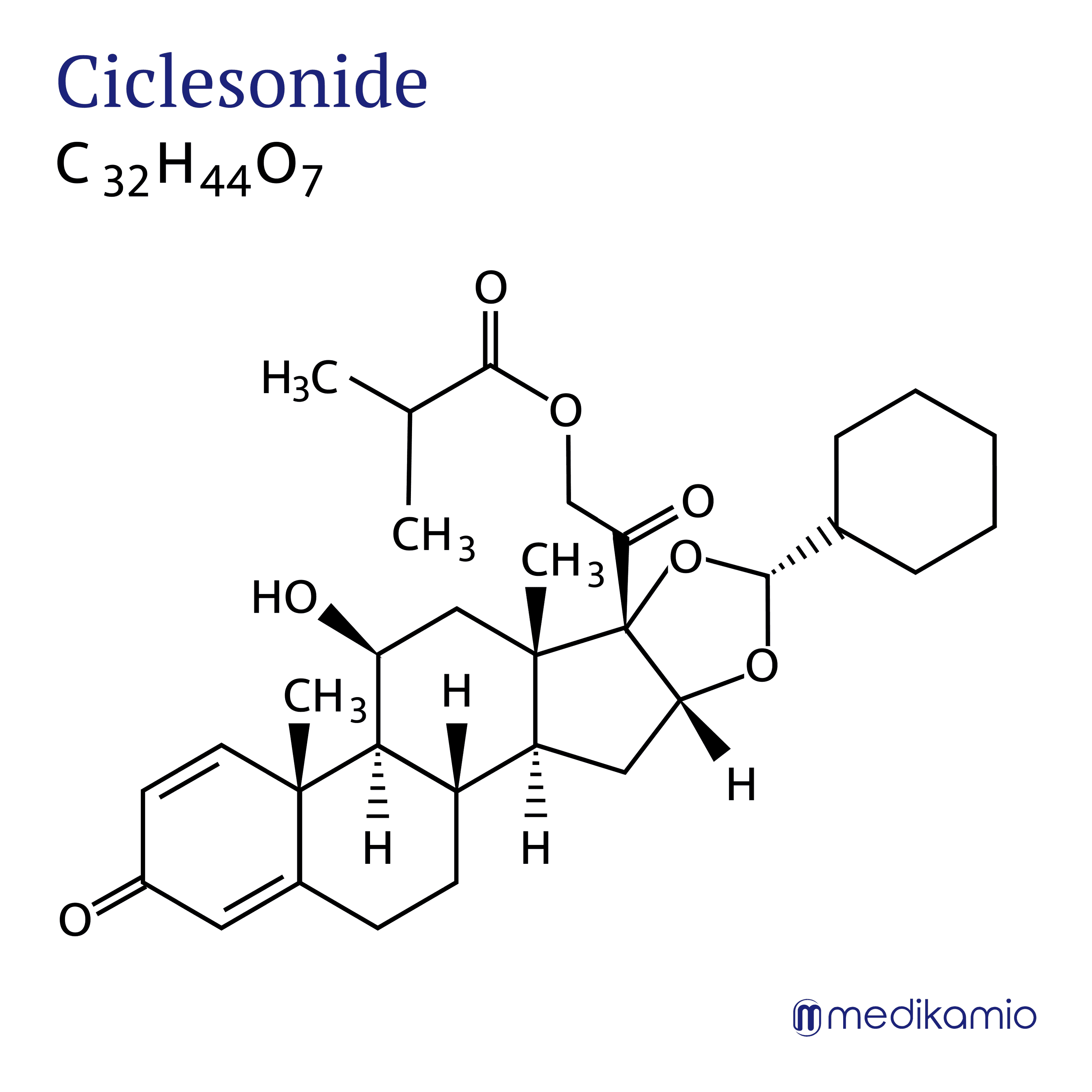Basics
Ciclesonide is an inhaled medication from the group of non-halogenated glucocorticoids. Glucocorticoids - including ciclesonide - are anti-inflammatory drugs. Ciclesonide is used for the long-term treatment of asthma.
In the USA, ciclesonide has also been used as a nasal spray to treat "runny nose" (allergic rhinitis) since 2012. Ciclesonide is a prodrug, which means that the active ingredient is supplied to the body in an inactive form and is only converted into the active form in the body through conversion processes. Due to this property, ciclesonide has a certain selectivity for the lower respiratory tract, meaning that it only works there.
However, ciclesonide is not suitable for acute respiratory distress. Chemically (structurally), ciclesonide is very similar to budesonide. Ciclesonide is considered to be "better tolerated" than oral glucocorticoids due to its inhaled application. However, this fact should be viewed critically, as systemic side effects cannot be ruled out and there are not enough conclusive studies on this. One advantage is that ciclesonide usually only needs to be used once a day.


